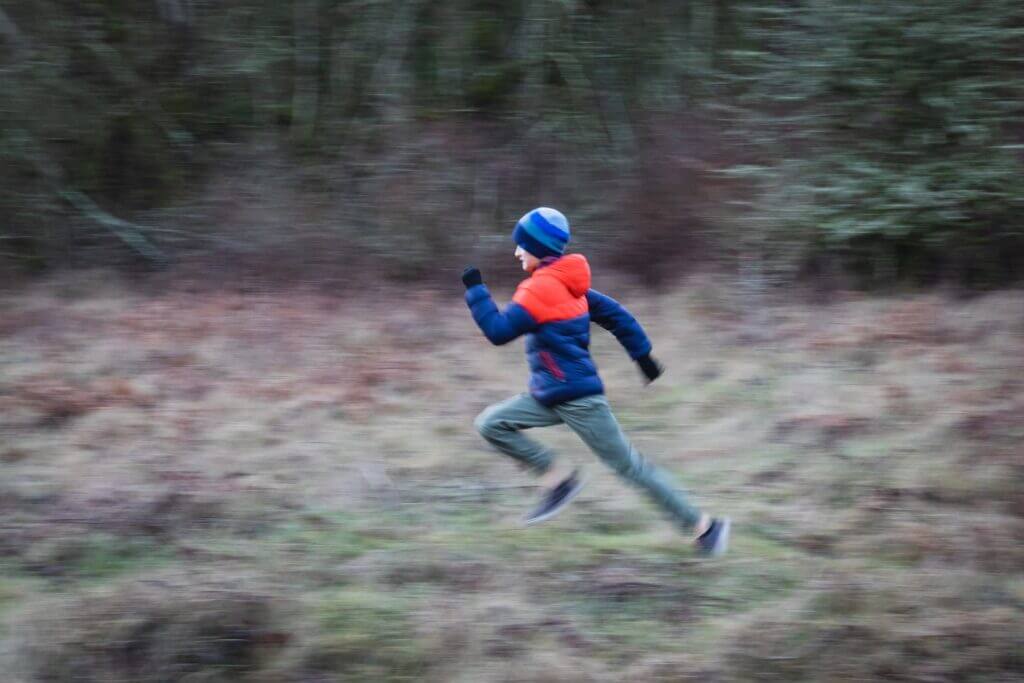When we think of running, we often focus on the lower body muscles, such as the quadriceps and hamstrings, which play a crucial role in propelling us forward. However, what many runners overlook is the importance of arm swing in running.
Arm swing may seem like a small and insignificant movement, but it can have a significant impact on running performance. Proper arm swing technique can help runners conserve energy, improve running speed and efficiency, and even prevent injuries.
In this comprehensive guide, we will explore the science behind arm swing in running, the benefits of proper arm swing technique, common mistakes to avoid, and exercises to help develop proper arm swing technique. Whether you are a seasoned runner or just starting, understanding the importance of arm swing can help you improve your running form and take your performance to the next level.
The advice we give in this article is based on studies conducted by the Journal of Experimental Biology and the National Library of Medicine about the effects of arm swings on running efficiency and performance. But it is also based on personal experiences we made during our short and long runs.
Let’s start by understanding the science behind arms swing while running…
Table of Contents
The Role of Arm Swings in Running
Arm swings play an important in your running biomechanics because they help to maintain balance and propulsion during your runs. As you may notice when you were running, your arm swing motion is very coordinated with your leg movement. In other words, the way you swing your arms influences your cadence, stride length, and a lot more.

Firstly, we use our arms and shoulders while running to counterbalance the rotation (mainly in the torso) of our bodies generated by the back or forth movement of our legs while running. So without the arms swinging motion, running will be more energy-consuming and more fatiguing.
Secondly, moving our arms while running propels our bodies to lean forward, which may increase our running speed and overall efficiency. It also helps to maintain an upright posture and proper body alignment during our runs.
The Benefits of Proper Arm Swing Technique
By using a proper arm swing technique you can maximize your running performance (speed, endurance, efficiency, etc…) and prevent a lot of injuries. Here are the main benefits you will notice if you use correctly your arms while running:
1. Improvement in your running efficiency
As explained in a study by the JEB (Journal of Experimental Biology), not using your arms (or bad arm swing motion) is more energy-consuming than having a proper arm swing technique. It means that having a better arm swing technique while running will help you run longer and be less tired.
2. Enhancement of your running speed

As explained in this article we wrote, moving your arms efficiently when you run propels your body forwards and this increased forward momentum is crucial for speed. It is the reason why the best sprinters have really big arm motions when they are running.
3. Providing upper body strength
Arm swing in running is not solely based on the arms, but also involves other upper body muscles like shoulders, chest, and back. By using correctly your arms during different types of runs, you strengthen these muscles over time, and it results in an improvement in your overall fitness.
4. Helps maintain balance and coordination
Using your arms correctly when you are running gives you more balance and coordination. It is especially important if you run regularly on trails because with more balance and coordination you are less likely to fall or get injured.
There are a lot more benefits from having a good arm swing technique while running, such as reduced tension in your trap muscles and upper body, a better running posture, and a smooth and fluid running motion.
Now that we saw why you should improve your arm swing motion, let’s see how you can achieve a perfect arm swing technique.
How to Develop a Proper Arm Swing Technique
Before seeing how you can improve your running arm swing motion, it is important to understand that the way you swing your arms is different depending on the types of runs you do. Here are some tips applicable to pretty much every type of run that will help you improve your arm swing.
- Relax your shoulders: Tension in the shoulders can cause tightness in the neck and back, which can negatively affect arm swing. Before starting your run, take a few deep breaths and consciously relax your shoulders.
- Keep your arms at a 90-degree angle: Your arms should be bent at a 90-degree angle at the elbow, with your hands relaxed and your fingers loosely curled. Avoid clenching your fists or tightening your forearms, as this can restrict blood flow and impede arm swing.
- Swing your arms forward and back, not across your body: Avoid crossing your arms over your body, as this can throw off your balance and reduce running efficiency. Your arms should swing forward and back in a straight line, parallel to your body.
- Use your upper body to drive your legs: Your arm swing should be coordinated with your leg movement. As your right foot hits the ground, your left arm should swing forward, and vice versa. This coordinated movement helps to generate momentum and drive your legs forward.
- Practice arm drills: Incorporate arm drills into your training regimen to improve your arm swing technique. One effective drill is the “backward arm swing”: while standing still, swing your arms straight back behind you, keeping them relaxed and at a 90-degree angle. Then, swing your arms forward, as if running, and focus on maintaining proper arm swing technique.
If you apply these 5 tips and exercises when you run, you will have a better arm swing motion and you will see some improvement in your running performance.
For runs more than 10 kilometers or 6 miles, you may benefit from having your hands around your heart. This technique is used by long-distance runners like Eliud Kepchoge.
Common Arm Swing Mistakes to Avoid
Know that you know what you need to do to have a proper arm swing technique, let’s see what you should not do.
- Crossing the Midline
When your arms cross your body’s midline, it can lead to inefficient movement and reduce your running speed. By crossing the midline with your arms you will rotate more your torso, shoulders, and neck. This activation put unnecessary strain on these body parts.
- Clenched Fists
Holding your fists tightly while running can increase tension in your upper body and negatively impact your arm swing. This can reduce your overall running efficiency.
- Inconsistent Arm Movement
Inconsistent arm movement can cause imbalances in your upper body, which can negatively impact your overall running form. This can lead to muscle fatigue and increase your risk of injury.
- Overstriding

When your arms reach too far forward during your arm swing, it can lead to overstriding, which can cause you to land on your heels and increase your risk of injury. This is not a problem when running short distances (sprints for example), but it can be problematic for your joints when running long distances and may lead to injuries.
- Overemphasizing Arm Movement
Overemphasizing arm movement and swinging your arms too much can reduce the energy that you have available to use for your legs, which can negatively impact your running speed and efficiency. The reason why it is essential to find a balance is between not enough arm swings and too much.
If you avoid these mistakes, you will drastically reduce the risk of an injury and continue improving your running form.
Arm Swing and Injury Prevention

Arm swing plays a vital role in injury prevention during running. Proper arm swing technique can help reduce the risk of injuries to the lower body and even improve running posture. Here are some ways in which arm swings can prevent injuries:
Stability
Arm swing helps in maintaining stability during running by balancing the upper body with the lower body. When the arms swing in a coordinated motion with the legs, it helps in stabilizing the core muscles and preventing excessive twisting or rotation of the torso. This stability helps to reduce the risk of lower body injuries.
Impact Absorption
When the feet hit the ground while running, the impact is absorbed by the entire body. Proper arm swing technique helps to absorb some of this impact and distribute it evenly throughout the body. This reduces the stress on the lower body joints, especially the ankles, knees, and hips.
Posture
The position of the arms while running can affect the entire posture of the body. Proper arm swing technique helps to keep the body in an upright position, which is crucial for maintaining a healthy running posture. This upright posture helps to avoid over-striding, which is a common cause of lower body injuries.
Muscle Activation
The arm swing technique involves the activation of different muscle groups such as the biceps, triceps, shoulders, and upper back. These muscle groups play a critical role in supporting the upper body and maintaining proper running form. By incorporating proper arm swing techniques, runners can strengthen these muscles and reduce the risk of injuries.
If you have doubts about your running form, you can check our article about the subject, where you will learn how to analyze your running form and find out how to fix the running form mistakes you are doing.
Conclusion
In conclusion, having a proper arm swing technique while running is very important to improve your running performance and prevent a lot of injuries. As we saw, to run efficiently you need to have to relax your shoulders, keep your arms at a 90-degree angle, and swing forward and backward. There are also some mistakes you need to avoid, such as clenching your fists or having an exaggerated arm swing motion.
By applying every single piece of advice given in this article, you will be a healthier and better runner.
Arm swing is only one aspect of your running technique you need to improve, but there are many. If you want to go further and increase your running performance, you should pay attention to your cadence. By reading our article about the subject, you will make able to increase your running cadence considerably.


